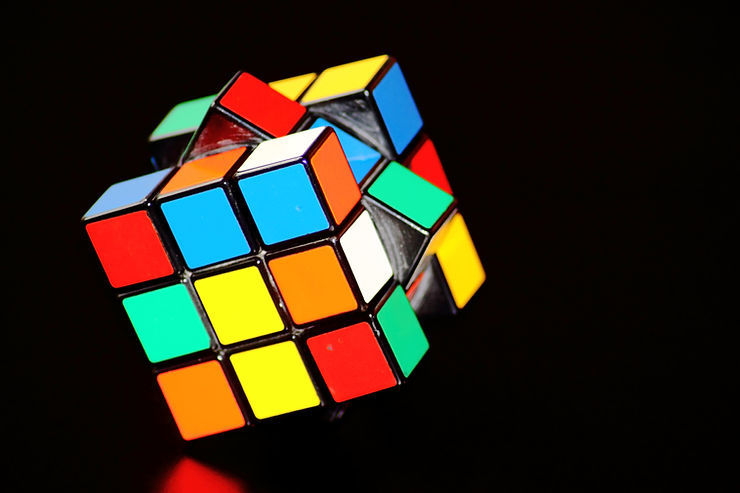Dopamine Fasting to Increase Happiness and Motivation

So, by now most of us have heard about all the positive benefits of fasting from eating, both mental and physical. But what about fasting from dopamine?
First, let’s define dopamine. Dopamine is a commonly misunderstood neurotransmitter - most people think that it is the neurotransmitter of pleasure. But dopamine is the neurotransmitter of wanting. Dopamine makes us strive toward perceived pleasures, this may be a promotion at work or a donut shop on the way to work.
So, dopamine is the neurotransmitter of wanting but for our purposes, we can link it to pleasure. The most interesting thing about Dopamine is that it functions through a scale type of mechanism in the brain. Meaning that it must exist on a balance. As there is more dopamine on the pleasure side of the balance, we feel good, but most of us know how balances work - they must always level out.
This means whenever we get a good hit of dopamine and the scale tips - it must also tip back, in an equal and opposite amount.
This is the most fundamental thing to understand about dopamine and the biggest takeaway: too much pleasure leads to pain.
The scientific explanation for this is that pleasure and pain are co-located in the brain and work as an opponent process mechanism - a balance. This is called the Opponent Process Theory.
As the balance tips toward pleasure, a self-regulating mechanism kick into action to bring it back.
We’ve all experienced that uncomfortable feeling after something pleasurable ends. Whether it’s a craving for another piece of cake or a letdown after a party. It’s natural to want good feelings to last longer.
It feels like the solution should be to keep eating or playing, but the issue is that just like with drugs we develop a tolerance to any activity that increases dopamine.
To create tolerance all you need to do is repeatedly partake in any pleasurable activity and the deviation to the pleasure side of the balance will get shorter and smaller. Meaning that less dopamine is released with each repetition and more stimulus is needed for future releases.
Anyone who is a caffeine enthusiast will know about tolerance. There was a time when one cup was enough to wake you up but if you keep drinking more and more you will need more coffee.
The worst part about all of this is that with tolerance the after response to the side of pain in our metaphorical balance gets stronger and longer. Meaning that you will experience more discomfort and urges to partake in that pleasurable behavior again.
The story gets even worse, with prolonged exposure to highly dopaminergic activities our tolerance builds up and this can change the dopamine set point to the side of pain - meaning that you walk around in a constant state of dissatisfaction.
Granted it should be noted most of this research was done on drug use, but it may present important information for the rest of us who want to optimize our brains and our lives for fulfillment and meaning.
As Dr. Anna Lembke says “hedonism, the pursuit of pleasure, leads to anhedonia, the inability to experience pleasure”.
Hedonism, the pursuit of pleasure, leads to anhedonia, the inability to experience pleasure.
Although this may sound depressing, there is good news. We can re-establish our balance by abstaining from overly dopaminergic activities. The recommended period is 30 days, which is what research has shown to be the period of time needed for most people to neuroadapt and return to their baseline dopamine level.
Granted 30 days is not a hard and fast rule and some people find that even just a day or a week can help them.
Now, you may be thinking, ‘well I’m not a drug addict, what is the point of this for me?’ Well, you may already realize we live in an incredibly dopaminergic environment. Essentially, we have a dopamine economy, everyone is trying to sell sugar, fat, sex, or the perception of winning.
I’m not saying that we should live like monks, but it is important to be aware of how our behaviors impact our brains and that we have the ability to fast from particular behaviors that are impacting our dopamine balance. Doing so will allow us to find more pleasure in this behavior when we return to it and also find more pleasure in our work and lives in general after our balance is realigned.
So, what is a good rule of thumb for choosing which activity to fast from? My general recommendation is to think of the things you do and identify the activities that you wish you weren’t doing. The things that you know aren’t great for you but for some reason you just find yourself doing them as if something was controlling you.
For some, this may be social media, or mindless eating, or even mindless working. Really anything can be dopaminergic, and in order to really gain true mastery of your brain and behaviors, you will need to be honest about all the small addictions.
The good news is, you are not alone, we all have our small addictions, and the only thing that will really make us find self-efficacy and meaning is overcoming them and creating a better brain environment.


